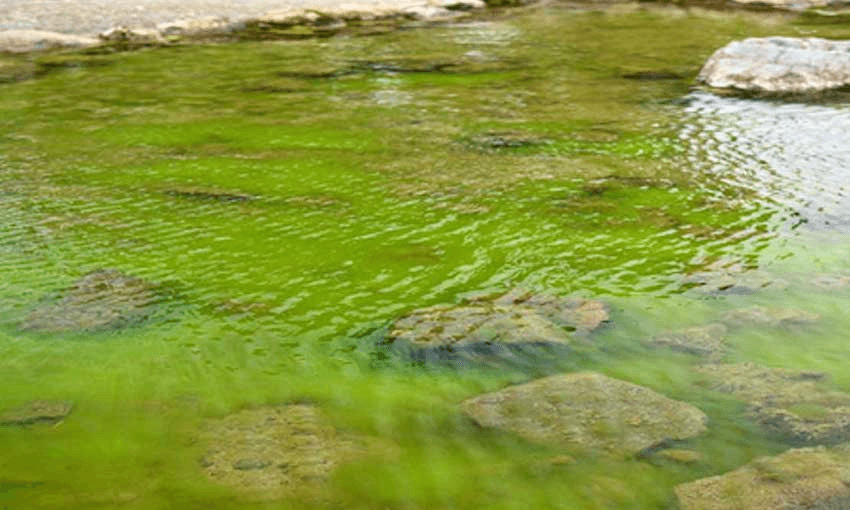As part of its overhaul of the Resource Management Act, the government has launched consultation on a proposal to shake up the management of freshwater in Aotearoa. Here’s a quick(ish) rundown.
What’s all this then?
Yesterday, the government released three discussion documents proposing changes to the “national directions” of three areas: infrastructure and development, the primary sector, and freshwater. “National direction” refers to various rules and policies that sit under the Resource Management Act (RMA) and inform how councils develop local rules and plans.
Sorry but this all sounds deeply boring.
I hear you, but as Bluey’s mum says, boring things are still important. The RMA, which was passed in 1991, governs how we interact with the environment. For some years there’s been broad agreement across much of the political spectrum that the complex web of planning rules sitting under the RMA are overly restrictive and contributing to our housing crisis and infrastructure deficit. There’s been less consensus on what should replace it though: the Labour government did repeal and replace the RMA in 2023, but the new coalition government repealed that replacement and embarked on its own overhaul.
Right, so this new announcement is the replacement of the replacement?
Nope – that was announced in March and is coming later this year by way of two new laws that “clearly distinguish between land-use planning and natural resource management, while putting a priority on the enjoyment of private property rights”. Yesterday was all about the aforementioned “national directions”, which comprise national policy statements, national environmental standards, national planning standards and regulations made under section 360 of the RMA.
The three discussion documents released yesterday propose reforms to 12 different “instruments”, as these sets of rules are called, as well as the introduction of four new instruments. Most of these fall under the primary sector and infrastructure and development categories, so let’s start with freshwater, where, mercifully, just two instruments are involved.
Phew. Tell me more.
With pleasure. Two sets of rules are set to be replaced: the National Policy Statement for Freshwater Management 2020 (NPS-FM) and the Resource Management (National Environmental Standards for Freshwater) Regulations 2020 (NES-F). Replacing NPS-FM was promised in the National-Act coalition agreement.
NPS-FM, NES-F… not exactly catchy names. Is that why they’re for the scrapheap?
Not as such. When it comes to freshwater, the current rules are “too complex, too expensive, and too often ignore the practical realities of landowners”, said agriculture minister Todd McClay yesterday, in a press release announcing “practical, farmer-focused reforms” that he said would “restore confidence and reduce red tape, while still delivering environmental gains”.
Farmer-focused, you say?
Yep. The current freshwater management rules, part of a 2020 reform package aimed at halting the degradation of our waterways, put controls on certain high-risk farming practices. The government thinks they’ve been too onerous on farmers and rural communities, and reforms are needed to “restore balance” so that “the interests of all water users, including farmers, growers, and rural communities, are properly reflected”.
There’s particular concern with Te Mana o Te Wai, the concept underpinning the NPS-FM that sets a hierarchy of obligations for authorities to prioritise in consenting: at the top is the health and wellbeing of waterways, then the health needs of people (such as drinking water), followed by “the ability of people and communities to provide for their social, economic, and cultural well-being”. It also emphasises that tangata whenua should be involved in decision-making around freshwater management.
The government was so concerned by this framework that it passed the Resource Management (Freshwater and Other Matters) Amendment Act late last year to exclude consideration of the hierarchy from resource consenting while the replacement for the NPS-FM was worked on.
What was the hurry?
Act has long been critical of Te Mana o te Wai, which it considers a form of its bête noire, co-governance – and one that relies on “vague spiritual concepts” to boot. National has been less openly scathing – it was a National government that first enshrined the concept in the NPS in 2014, after all – but just before the 2023 election the party announced its intention to “rebalance” Te Mana o Te Wai to better reflect the interests of all water users. This is the line that made it into the National-Act coalition agreement.
In the press release yesterday, associate minister for the environment Andrew Hoggard (an Act MP) said Te Mana o te Wai had “caused frustration across rural New Zealand, with some councils applying it in a way that sidelines the very people working to improve water outcomes”. National’s McClay, interestingly, was more forthright, saying, “We won’t stand by while councils weaponise Te Mana o te Wai, to push ideology over common sense.”
How have councils ‘weaponised’ Te Mana o te Wai?
The press release mentions the government’s “decisive intervention” in 2024 to stop the Otago Regional Council from passing its land and water plan that would have increased freshwater environmental protections, and, according to McClay, “would have imposed unnecessary costs and uncertainty on rural landowners”.
I see. So what changes are actually being proposed?
Some new objectives are suggested, including that councils should “safeguard the life-supporting capacity of freshwater and the health of people and communities, while enabling communities to provide for their social, cultural and economic well-being, including productive economic opportunities”. These two things would have to be considered equally, with neither considered more important than the other.
Councils would also be required “to consider the pace and cost of change, and who bears the cost”. The aim of this is to “increase recognition that change takes time. Long timeframes for improving water quality have always been appropriate and are, in some cases, unavoidable.”
As for how exactly Te Mana o te Wai should be “rebalanced”, three options are proposed. First, the hierarchy of obligations would be removed and councils would be advised that Te Mana o te Wai shouldn’t be used in planning decisions, but “process steps for councils to apply Te Mana o te Wai – for example, by actively involving tangata whenua in freshwater management” would be retained. The second option is to reintroduce Te Mana o te Wai provisions from the 2017 NPS-FM, which essentially required councils to recognise the connection between water and the broader environment and engage with the community, including tangata whenua. The third option would ditch the concept entirely, removing all mention of Te Mana o te Wai from the NPS.
Anything else?
Yep – more flexibility for councils around monitoring and reporting requirements and the setting of limits for stuff like nitrogen and phosphorus levels from agricultural fertiliser runoff, E.Coli and stock units (eg how many cows) are allowed per hectare on a farm near a waterway. This includes the potential removal of “bottom lines”, minimum national standards for the likes of nitrate and ammonia toxicity.
Also, allowing commercial vegetable growing activities (which are high risk in terms of nitrogen leaching) to go ahead without resource consent, permitting the construction of off-stream water storage such as storage ponds on farms, allowing more farming activities near wetlands and removing the requirement for councils to map natural inland wetlands within 10 years.
Then there’s simplifying fish passage regulations, reducing requirements for farmers to report on synthetic nitrogen fertiliser use, and introducing mapping requirements for drinking water sources, to name just a few.
Righto. What has the response been to these proposals?
The Green Party’s environment spokesperson Lan Pham, formerly a freshwater commissioner, said the proposals painted “a damning picture of a government hellbent on profit at all costs”, adding that it was “a dark day for rivers, lakes, streams, beaches, forests and all who enjoy and rely on these taonga across Aotearoa”.
Choose Clean Water spokesperson Tom Kay described the proposed reforms as “a massive blow for the health of our water and the health of our communities”, while Greenpeace said they would “drive more dairy pollution at the expense of safe drinking water and swimmable rivers”. The Environmental Defence Society reckoned that “the reprioritisation of freshwater objectives is likely to leave gaps, have cumulative adverse effects, allow more pollution and breach FTAs”, while the rebalancing of the hierarchy of obligations of Te Mana o te Wai would “significantly weaken protections”.
Federated Farmers, meanwhile, welcomed the proposals, with the group’s freshwater spokesperson Colin Hurst particularly applauding the proposed rebalancing of the “unworkable and highly problematic” Te Mana o te Wai. “We believe it’s worth considering whether Te Mano o te Wai [sic] is a concept that should be scrapped altogether, which is one of the options now on the table,” he said in a press release. Beef + Lamb New Zealand was also supportive of the proposals, noting its concerns around the “unachievable numeric limits” set by the current regulations, but said further analysis was required before it would come out in favour of any of the options.
What happens next?
Consultation runs until July 27, with the public encouraged to submit feedback on the proposals here. You can read the discussion document and the regulatory impact statements here, as well as find details for a series of webinars the Ministry for the Environment is running on the proposed changes. The government is also seeking feedback on whether to implement the reforms under the existing RMA (for “immediate impact” or as part of the replacement legislation (“to have impact longer term”). A draft set of proposals will be released later in the year.




